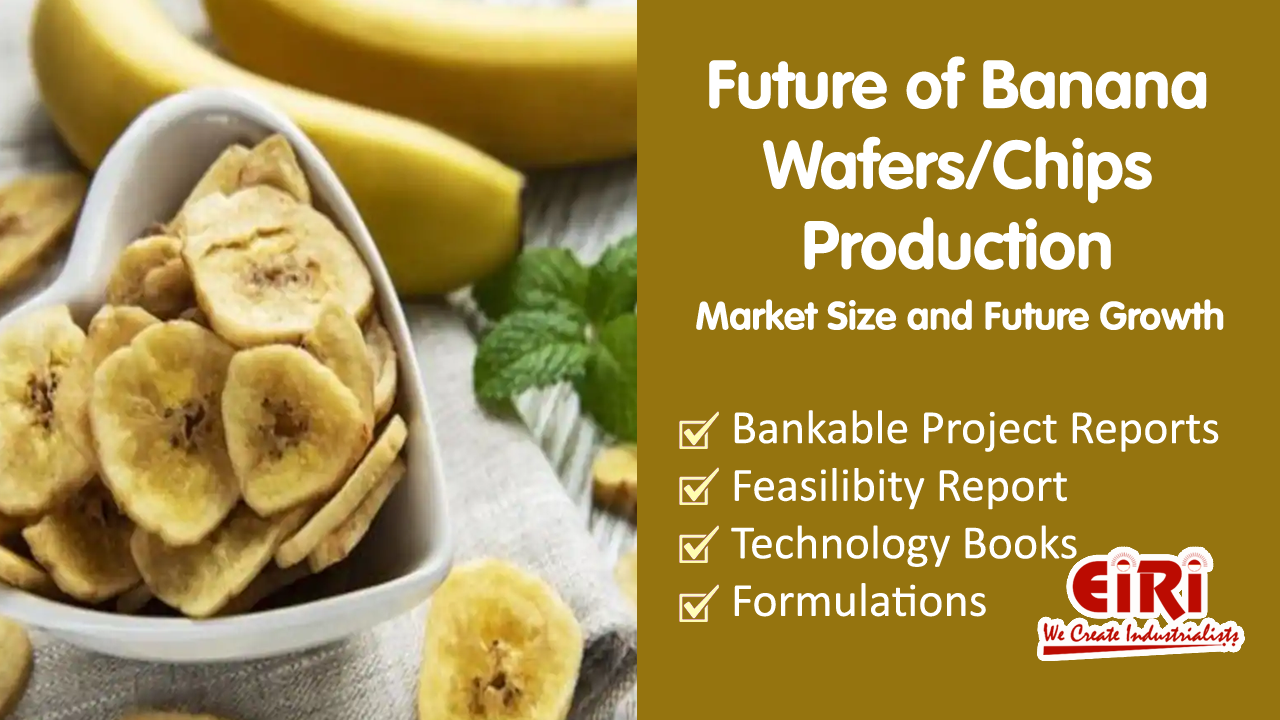Future of Banana Wafers/Chips Production
Brief Overview of Banana Wafers/Chips Industry
Banana chips are a popular by-product of bananas. Rapid industrialization and a fast-paced urban lifestyle have also fueled the global demand for banana chips. Asia-Pacific region had the highest demand at 19%. The rising demand from small and medium enterprises (SMEs) is also an important trigger for increasing demand. Online sales channels will boost the banana chips market and global demand. While plain banana chips continue to remain the most popular, manufacturers are being innovative and using different flavors in banana chips. Jaggery or spice coated chips are popular in the Indian market and are being exported.
Banana chips are made from fresh bananas by frying them. They are a healthy snack and have become popular among health-conscious consumers. Banana chips are particularly popular among youth. They retain most of the nutritive properties of fresh bananas. They are a good source of potassium and fiber. You also get vitamin C from banana chips which help to improve your body’s immunity. A 1.5-ounce serving of banana chips contains nearly 218 calories. This is more than 10% of your daily calorie intake (considering 2,000 calories daily). You should eat banana chips in moderation. Eating more can trigger an increase in cholesterol levels and blood sugar.
Future Scope and Demand
India and the Philippines are the key banana chip manufacturers in the world. There is abundant cultivation of banana in these countries. The high production and supply of bananas make it possible to produce by-products like banana chips. Recession and economic slowdown have not affected the industry and it is likely to grow at a healthy annual rate of 10%. In 2008, the banana chips industry was valued at more than $56.3 billion. Consumers are moving towards consuming banana chips and other banana by-products in addition to only consuming a fresh banana. In 2011, the Philippines exported nearly 30,141 tons of banana chips worth more than $50,000 million. The country controls a major share of the global banana chips industry.
Manufacturing Process
Banana chips are made mostly from Cardava bananas. Good quality and green looking bananas are preferred for making banana chips. Bananas are first transported from the farm to the manufacturing facility. They are thoroughly washed in water to remove any debris. Bananas are then peeled and sliced either manually or using machines. Once slicing is done, the banana slices are soaked in brine water. This is done to prevent the oxidation of bananas that can cause discoloration. The next process is blanching where banana slices are dewatered and prepared for frying using centrifugal force. They are fried in coconut or sunflower oil depending on the variant and customer taste.
Once the chips are fried, they are de-oiled. Some manufacturers also use ginger powder or turmeric to enhance the chips’ color. The next stage involves the seasoning of banana chips. The final process in the production cycle is packing. The chips are sent for packaging and labeling after which they are delivered to the different distribution channels for selling.
Click Here for Banana Based Industries And Banana Processing Project Reports
Complete Book On Banana Cultivation, Dehydration, Ripening, Processing, Products And Packaging Technology (Hand Book)





